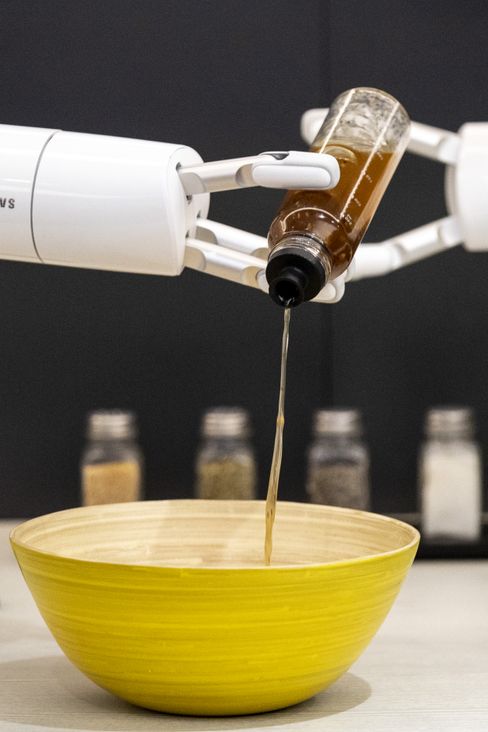Vacuuming, mopping, mowing the lawn, cleaning the grill and guarding the home – more and more companies are expanding their business to include robots for the home. Dyson has just announced plans to develop robotic hands that can grab objects. This should also make housework such as washing clothes or loading the dishwasher possible in the future.
According to the company, the technology should be in households by the end of the decade. Dyson converted a hangar at Hullavington Airport in the UK for the robotics centre. This year alone, the British company plans to hire 250 robotics engineers in the fields of computer vision, machine learning, sensors and mechatronics. 700 more robotics specialists are to follow. Dyson chief engineer Jake Dyson leads the research and development work.
But Dyson is not alone. The market for digital household help is highly competitive – and growing rapidly. The International Federation of Robotics (IFR) forecasts that almost 23 million household robots used for vacuum cleaning, mopping and lawn mowing will be sold worldwide by 2025.
The rates of increase are great. In total, household robots worth 6.7 billion US dollars were sold last year. By 2023 it should be ten billion US dollars. Vacuum cleaner robots can already be found in about every tenth German household.
The robot visions of the tech giants
Dyson’s competitors like the vacuum robot specialist iRobot are also developing household helpers with hands. “We’re at a point where we’re starting to understand the environment we’re operating in, so we can do something like this,” said iRobot CEO Colin Angle last year. However, it is still unclear what exactly the task of a first household robot with arms and hands will be, he said.
While iRobot “is beginning to understand that it can do something like this,” other companies have already developed new digital household helpers. Presented in December 2019 Google-Sister “X” introduced the “Everyday Robots” project. The goal: robots suitable for everyday use that can move in unstructured environments and learn new tasks. Today they are already being used on the Google campus. According to Google, more than 100 of these robot prototypes are in use in their own offices.
The “Everyday Robots” open doors, clean windows, clean tables and empty the wastebasket. The robot can orient itself using machine vision and the cameras on the moving head.


Enlarge image
Samsung Bot Handy: The robot should become a useful household helper
Photo: ETIENNE LAURENT/EPA-EFE/REX
Also the electronics giant Samsung has already designed the prototype “Bot Handy”, which can load a dishwasher, collect laundry and set the table. The robot under development will use artificial intelligence to recognize and pick up objects of different weight, size and shape. According to the company, the sister model “Bot I” will follow later this year: The robot can autonomously follow its owner through the home as a kind of self-propelled tablet computer.
Amazon’s rolling alarm, Tesla’s big plans
And further: At the end of 2021, the internet giant showed Amazon his rolling mini robot “Astro”. However, cleaning is not part of Astro’s job. It serves as a rolling alarm system, video phone assistant and cup holder. The robot can extend the camera on a pole up to one meter in order to see over annoying obstacles. He should even be able to attack burglars. “We believe that in five to ten years every household will have at least one robot,” said Amazon device boss Dave Limp a year ago.
more on the subject
Now lay Tesla-Boss Elon Musk (50) one more thing: Last year he announced that he would build a robot that would take on all the tasks that humans wouldn’t want to do. This could even become “more important than the automotive business,” as he points out Twitter wrote. Now action follows. Musk wants to present his humanoid robot in September. 1.73 meters tall, weighs 57 kilos, has a load capacity of 20 kilos, name: Optimus. He is supposed to take over everyday tasks, such as shopping and one day even caring for the elderly and the sick. Musk wants the artificial intelligence that Tesla is developing for electric cars, among other things. His battery vehicles are “robots on wheels” anyway.
